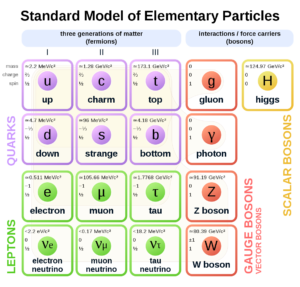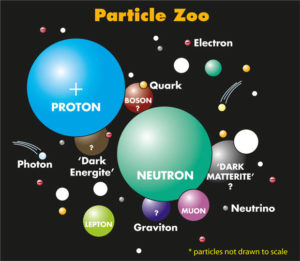[“What’s changed in the last 50 years” series]

Another interesting Symmetry Magazine article – a historical recap of the Standard Model and some highlights.
• Symmetry Magazine > “Six fabulous facts about the Standard Model” by Sarah Charley ( March 16, 2021) – Learn about the Standard Model of particle physics and how physicists use it to predict the (subatomic) future.
How the standard model (“particle zoo”) became the Standard Model, “one of the most robust scientific models in the world.” How the Model has evolved from the 1970’s to 2020’s.
“The Standard Model is a collection of ideas that tells us about nature and how all the particles in the universe interact with each other,” says Tulika Bose, a physics professor at the University of Wisconsin.
- The name “Standard Model” was a placeholder that never got replaced.
- The Standard Model makes some assumptions.
The laws of physics are the same throughout the entire universe.
Probability is conserved.
Cause-and-effect relationships are unbreakable.
Processes happening at the same time that don’t intersect spatially are independent of each other. [Locality?]
There is a finite number of particles and fields.
Special relativity and quantum mechanics are canon.
- The Standard Model is built from experimental measurements.
By itself, the Standard Model cannot predict the mass [inertia?] of the various fundamental particles, nor can it predict how strongly they will interact with each other [field coupling?].
- The Standard Model needs at least 18 independent inputs. [At least 18 independent variables.]
“It’s like 18 independent knobs that each have a fixed value,” Bose says. “They are free parameters that are not tied to each other.”
- The Standard Model has evolved. [For example, that the neutrino has mass.]
- The Standard Model cannot explain all of physics. [The gravity thing, eh.]
More to come …

